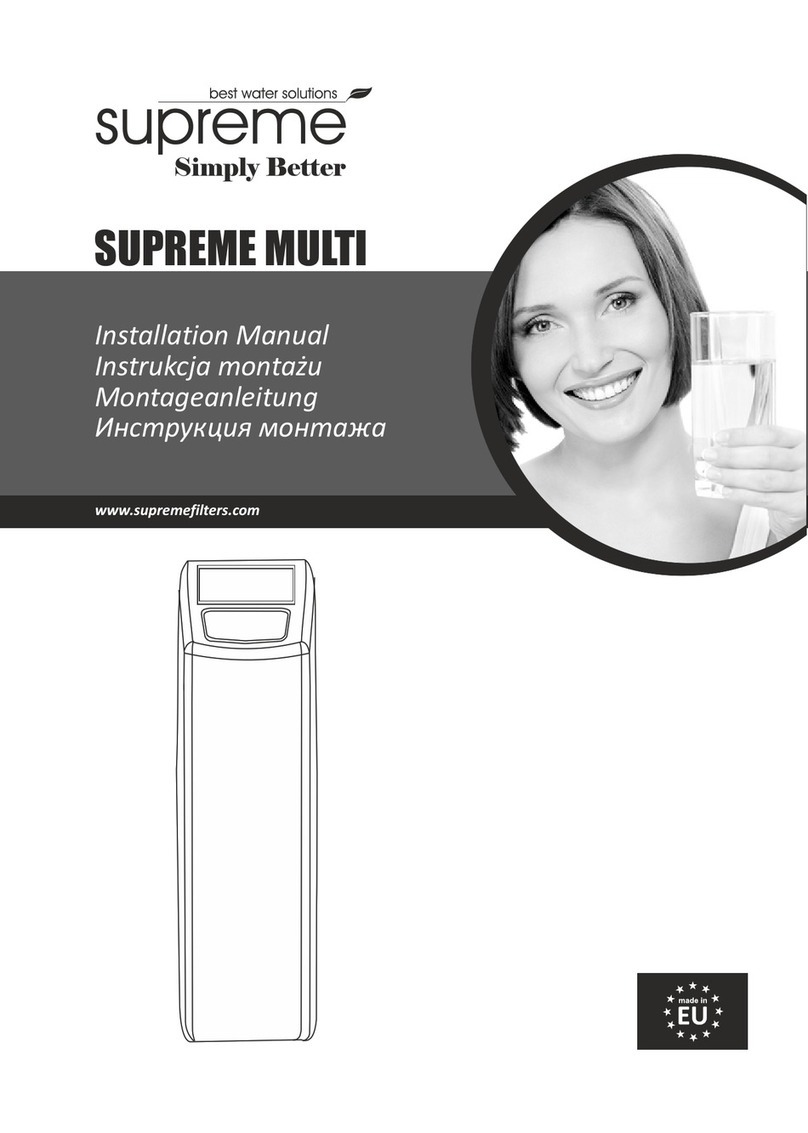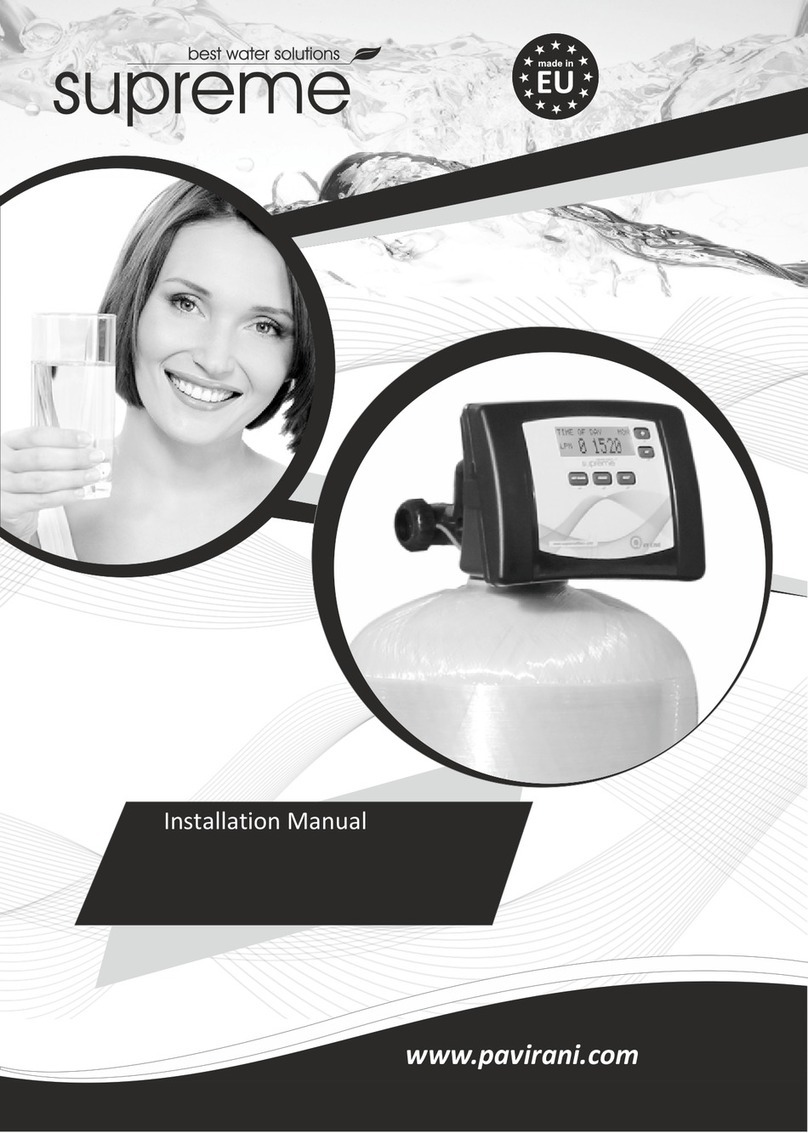
- Before you begin the installation of the appliance,
we advise you read and carefully follow the instructions
contained in this manual. It contains important
information about safety, installation, use and
maintenance of the product. The actual system that you
have received, may differ from the pictures, illustrations,
descriptions in these Instructions.
- Failure to follow the instructions could cause personal
injury or damage to the appliance or property. Only when
installed, commissioned and serviced correctly,
the appliance will offer you many years of trouble-free
operation.
- The appliance is intended to 'soften' the water, meaning
it will remove hardness minerals; it will not necessarily
remove other contaminants present in the water.
The appliance will not purify polluted water or make it safe
to drink!
- Installation of the appliance should only be undertaken
by a competent person, aware of the local codes in force.
All plumbing and electrical connections must be done
in accordance with local codes.
OPERATING PRESSURE MIN-MAX: 1,4-8,3 bar / 20-120 psi
- this appliance is configured to perform optimally at an operating pressure of 3 bar (45 psi) ± 1/2 bar (7 psi);
in case of a lower or higher operating pressure the performance may be affected negatively!
- check water pressure regularly.
- take into account that night time water pressure may be considerably higher than day time water pressure.
- install a pressure reducer ahead of the appliance if necessary.
OPERATING TEMPERATURE MIN-MAX: 2-48 °C / 35-120 °F
- do not install the appliance in an environment where high ambient temperatures (e.g. unvented boiler house)
or freezing temperatures can occur.
- the appliance cannot be exposed to outdoor elements, such as direct sunlight or atmospheric precipitation.
- do not install the appliance too close to a water heater; keep at least 3 m (10 ft) of piping between the outlet
of the appliance and the inlet of the water heater; water heaters can sometimes transmit heat back down
the cold pipe into the appliance; always install a check valve at the outlet of the appliance.
ELECTRICAL CONNECTION:
- the appliance only works on 24V AC; always use it in combination with the supplied transformer.
- make sure to plug the transformer into a power outlet, which is installed in a dry location, with the proper rating
and over-current protection.
- Before setting up the appliance, make sure to check
it for any externally visible damage; do not install or use
when damaged.
- Use a hand truck to transport the appliance. To prevent
accident or injury, do not hoist the appliance over your
shoulder. Do not lay the appliance on its side.
- Keep these Instructions in a safe place and ensure that
new users are familiar with the content.
- The appliance is designed and manufactured
in accordance with current safety requirements
and regulations. Incorrect repairs can result in unforeseen
danger for the user, for which the manufacturer cannot
be held responsible. Therefore repairs should only
be undertaken by a competent technician, familiar
and trained for this product.
- In respect of the environment, the appliance should
be disposed of in accordance with Waste Electrical
and Electronic Equipment requirements. Refer
to national, local laws and codes for correct recycling
of the appliance.
IMPORTANT INFORMATION
OPERATING CONDITIONS AND REQUIREMENTS
5






























